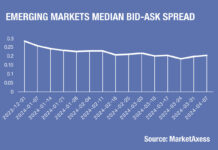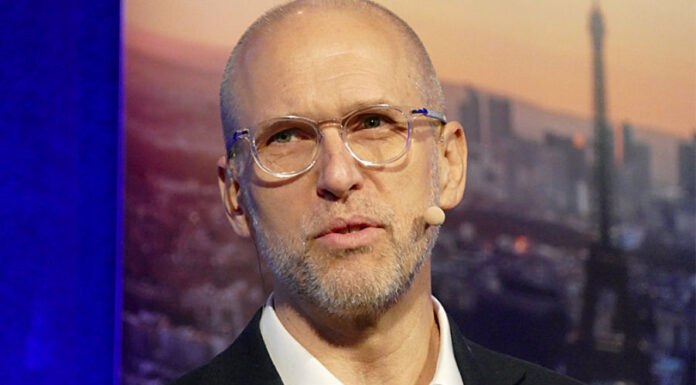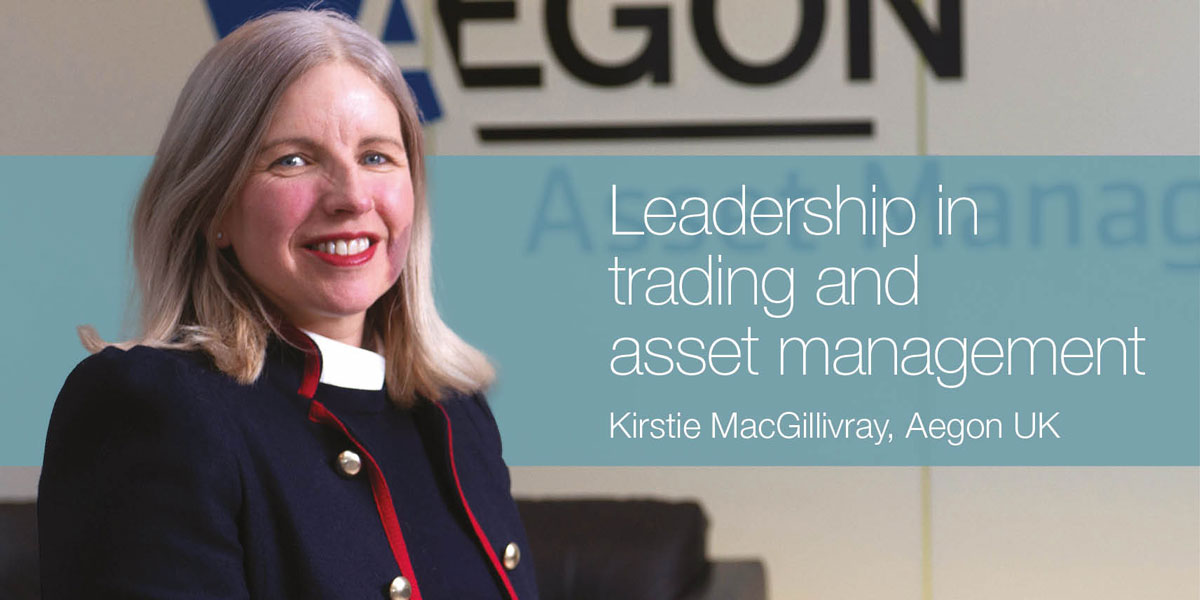
As CEO of Aegon UK and its head of investment dealing, Kirstie MacGillivray has a unique perspective across the front office and the board room for buy-side firms.
Traders have a significant part to play in looking after customers, and ensuring they are treated fairly throughout the whole of the investment process. That is foremost in all my traders’ minds. Whether they’re executing a small currency trade or a large fixed income trade, they must always think about delivering best execution on that trade.
I stress to traders, especially younger traders on the desk, to always remember that for that trade, there’s an end client, they might be saving money every month to put into their pension to ensure they have a good retirement. You have a strong duty of care towards them to ensure that we’re always delivering the best outcome.
Traders are starting to think about their part in the asset management industry regarding environmental, social and governance (ESG) goals which impact the trading process. I’m keen that we start thinking about that. Aegon Asset Management is a founding member of the Sustainable Trading initiative and that’s something we should be promoting more. First and foremost, what can we do to show that we can do good for the wider environment?
How do you think the status of trading within the industry has changed within your career?
It has greatly improved. If I look over the last five to 10 years, trading is now seen as an integral part of the investment process. Traders and heads of trading have more profile and certainly within buy-side firms they are a key part of the industry. That’s great, because when trading is seen as more than an admin function, the value that trading can add to the investment process is understood, with better performance outcomes through better trading.
What do you think are effective ways for traders to engage with a buyside industry in order to raise profile and to support change where it’s needed?
We already touched on sustainable trading as a great example. Members network of likeminded individuals and peers coming together to collectively establish common principles that the industry can then go ahead and adopt. In the UK, the Investment Association, has a very active Buyside Trading Committee which can be an invaluable resource to discuss new market structure changes, new regulation and the associated impact therein. I always encourage my dealers to get involved with these industry forums, because they are the way that things can happen. We’re too small, to really engage ourselves with regulators. And actually, we’re all a little bit time poor as well so these forums are an efficient way of debating and delivering change. If collectively we can come together, we can be very powerful especially with the goals of Sustainable Trading.
How can competition between firms be managed in order to allow buy-side firms to collaborate more effectively?
I think we do well collaborating with our peers in areas that are non-competitive and have industry wide advantages. We avoid competition issues, that is well understood. This starts with establishing the culture on the trading desk: traders must understand the controlled environment in which they operate both internally and externally, and the behaviours expected of them.
As a head of trading one of the key parts of my job is to be a leader for the culture I want to see across the desk and across the organisation. That culture delivers the guardrails to engage in dialogue across the industry.
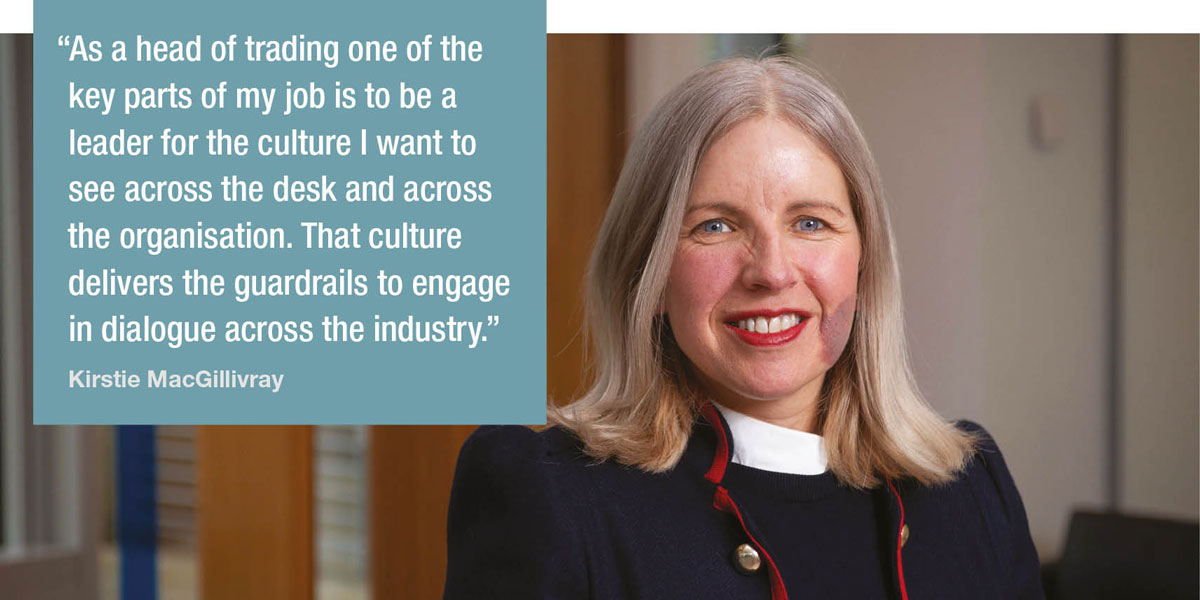
What are the greatest pain points on the buy side trading desk today?
Firstly, managing the bifurcation of liquidity. Operating via multi-asset and multi-currency desks, we operate in different markets across different market structures and regulations. Understanding the nuances of different markets for a small desk like ours, with six traders in total – two on fixed income, two on equities, one multi asset plus myself – is a challenge. Since I took over as UK CEO, I no longer execute trades, I only oversee the desk.
Secondly, abiding by the ongoing slew of regulation to keep abreast of what we need to do. The amount of first line monitoring we complete now compared to a few years ago is huge. Keeping up with the regulatory and market structure changes, while understanding the different requirements in the different markets and across the different asset classes, keeps us fully occupied.
Third is technology, something that can continue to be a pain point. If you can get it to work for you it’s wonderful, but when it doesn’t work it’s very, very painful. Ensuring you’ve got the technology working properly, connectivity to venues, etc, is something that can be taken for granted if it all works.
In fixed income, how can a trading head optimise liquidity access most effectively?
I do still believe this is very much a relationship business. Significant volume now trades electronically, and our workflow reflects that. But traders still need to understand where the liquidity is and how best to access it. So despite the fact that we probably execute 65-70% of our trades electronically, traders still spend most of their time talking to the street, ensuring we have continual information flow on liquidity.
Particularly in times of market stress, for example, the UK’s ‘mini budget’ in September this year, commencement of the Ukraine war earlier in the year, traders must be close to the street and understand where liquidity is, especially in the more illiquid credit markets.
What would you say are best practices for integrating trading desk efficiency into the investment process?
Shortening the communication line is very important. We’re operating in a hybrid world now- both in the office and at home – it is essential that communication lines between PMs and the traders are very short. Pre Pandemic, the traders sat beside the PMs, to ensure that there was good collaboration between the two, we are replicating that in a hybrid world through better use of technology. That allows a PM to understand the trading process and ensure it is efficient. I expect my traders to behave like investment bank sales traders with the PMs as their clients. It is their job to talk to the PMs about the best way to access liquidity, to execute and to have orders coming through. That efficiency allows PMs’ investment decisions to be better executed, which gives a better outcome for our clients.
What is your own approach to leading and building a cohesive trading team?
Encouraging everybody to talk to each other. In the office, the equity traders sit with equity PMs and fixed income traders with fixed income PMs. The team has stopped sitting together as one team, but we meet up once a week as a team to discuss any issues. As one of our traders is purely multi-asset and does work between the two main asset classes, he ensures that both sides on equity and fixed income are working in a similar way. Culturally, despite the markets being very different, I expect the same standards of all. Dealers are held to the same standards. Our second line monitoring is all on that basis, they all understand that we’ve got the same best execution policy, and they all have to deliver to that policy.
Ultimately, they all understand the key role that they play in that investment process, and that incentivises traders to work together and ensure that they’re being cohesive. The execution experience across all mandates is exactly the same. Best execution is the thought process you go through to get to the best outcome.
How broad are the skill sets needed on the trading desk today, relative to say 15 years ago?
If I had the luxury of an over-resourced desk, I would have skill sets focused on data science alongside more traditional traders. Unfortunately, I’m not in that position and we run quite a small desk and so I need traders to have broad skill sets. It’s not enough that they can execute trades and that’s sufficient. They need to understand the full end-to-end lifecycle of a trade. They need to attend PM strategy meetings to understand how the PMs come to their decisions. They also need to interact with our operations, marketing and RFP teams who have questions from clients. They need to be able to face off to clients directly for due diligence visits, and to be adept at communicating what they do and why they do it. I am looking for well-rounded investment professionals who really understand the markets. Traders sometimes get a hard deal but often the trading team has full visibility across an organisation.
What is your approach to bridging the different experiences of generations within trading?
Our oldest trader is in his sixties and his market knowledge, and experience on the sell side, has been invaluable for teaching other traders even those with a good depth of experience. We utilise the different levels of knowledge and experiences including the younger generation who we need with an understanding of, and excitement about, what technology can do. In my small team I have a good mix and that’s the ideal. Everybody contributes.
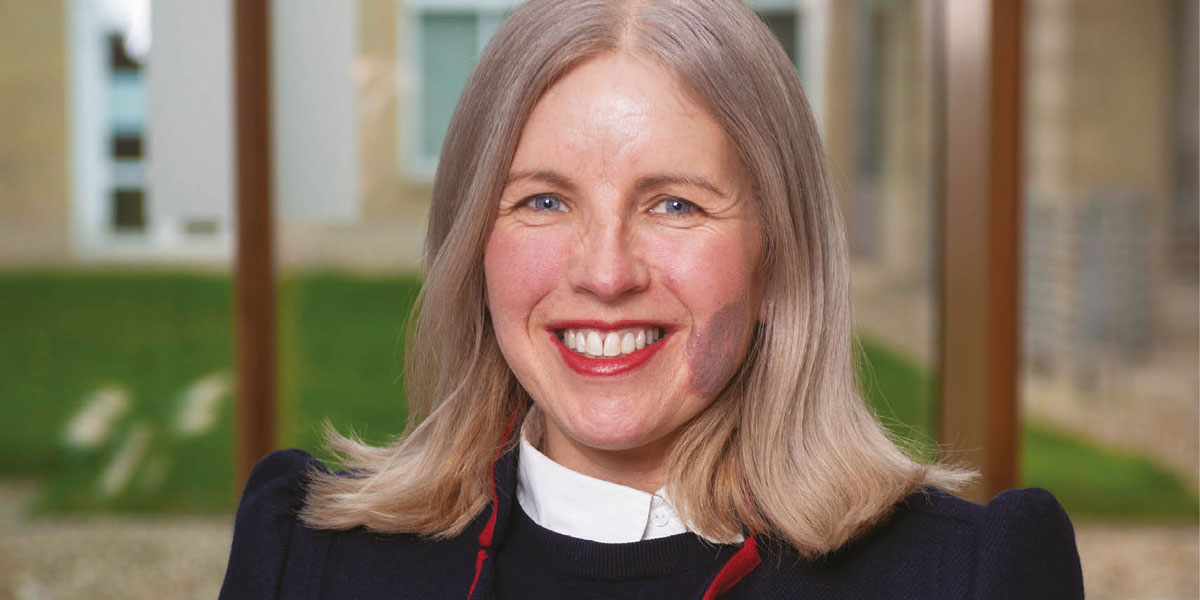
How would you say diversity supports better trading?
Everybody has something to bring, and I’m always looking for new ideas. I like people to challenge how we could do things differently. It’s easy for a leader to slip into hiring in their own image. You end up with a team who all think in a very similar way. That is an easy team to manage because you can generally understand what they’re going to do. A diverse team can be harder to manage but you reap the benefits of that diversity. We should never stand still. We’re always moving in this industry. These markets are always evolving. To keep pace with that we need diversity of thought on our trading desks and in our organisations.
Your career background is itself very diverse in experience; what does that add to your abilities?
I’ve worked on the buy side and sell side, I’ve been heavily involved in derivatives and front office governance and I do like to get involved in issues. I also expect my team to work closely with their colleagues in other departments be that marketing, operations, risk, etc. This breadth on the trading desk gives better visibility of how the asset manager works as a whole, how it services and understands its clients. Doing that allows you to better advertise the key benefits of a well-functioning, dealing desk delivering the right execution outcomes for clients.
But likewise, the trading desk also has greater visibility across this organisation, it is seen as integral to the investment process. We have very good working relationships across the business. I would encourage anybody in this role to ensure that you keep working at those relationships, because we are partners to the business. Only by regular collaboration with the business do we get better outcomes. We’ve got to understand new products that are coming down the line and how that will require different trading abilities.
Do you think the buy side has a coherent set of objectives to achieve on behalf of investors?
I think we do. We would all express them slightly differently but ultimately, we are all trying to deliver the investment objectives that investors want, with a high duty of care. Some of that comes through regulation, particularly in the UK, but it’s bigger than that.
The buy side want to do a good job. It does strive to understand the client and their requirements and strive to deliver on that. In the past – 10-15 years ago – the industry was perhaps too slow to react to mediocre performance. We have got much better in that regard.
We have to be accountable for what we do. We are in a very privileged position and should be aware of that. We can and should make a big difference.
What are your personal goals?
I keep driving for transparency, and lower complexity including around investment products. The industry might think it is clever that we can build complicated models but when I first started my career, 25 years ago, my boss at the time said to me, if you can’t explain it to your grandmother, then it’s too complicated. I think as an industry, we should remember that. If you can’t explain it to somebody in a straightforward fashion, it’s too complicated.
Can the investment business match the strength of engagement with regulators that the sell side and market operators employ?
It is important that asset managers get involved with the various member networks, which I have mentioned previously, to be able to engage with regulators. Regular industry conferences can be useful. But the work the Investment Association does in the UK, is very important for policy formulation.
What single thing can be introduced to improve capital markets for investors?
Free exchange pricing for all would create a level playing field for all investors.
©Markets Media Europe, 2022
TOP OF PAGE












